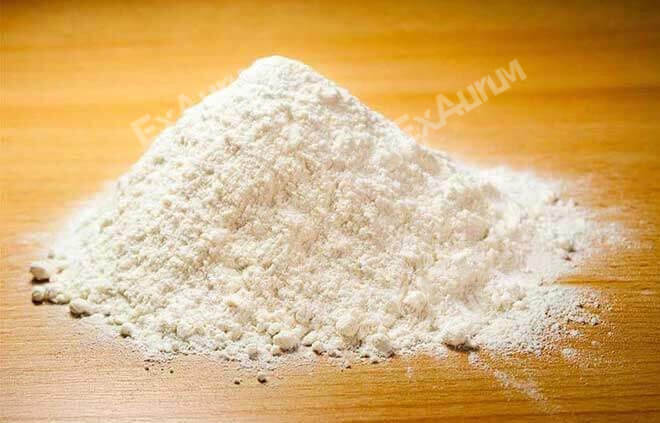2019-05-24 Views:3018
Warm Tip: If you want to know more information, like quotation, products, solutions, etc., please Click here ,and contact us online.

Oxidized zinc and lead minerals have many kinds. There are 9 kinds of oxidized lead minerals, mainly includes cerusite (PbCO3) and vanadinite (PbSO4). There are 13 kinds of oxidized zinc minerals, mainly includes smithsonite (ZnCO3) and willemite (Zn2SiO4).
The flotation method of oxidized lead minerals is generally collecting the minerals with xanthate after sulfuration, and the flotation method of oxidized zinc minerals is collecting the minerals with amine collectors after sulfuration. The use of flotation conditioners process can increase the selectivity of the flotation process, enhance the effect of the collectors, and improve the conditions of the ore pulp.
Oxidized ore is generally formed by ionic bonding, and is highly hydrophilic. It is not easy to float oxidized ore with xanthate collector. After sulfuration with sodium sulfide, a highly hydrophobic sulfide film is formed on the surface of the oxidized ore. This film is easy to act with the xanthate collector, which makes oxidized ore activated and then floated.
The activation of oxidized ore by sodium sulphide is mainly caused by sulfur ions, and the S2- ions undergo a displacement reaction with anions on the surface of the oxidized ore to transform the surface of the ore particles from oxides to sulfides.
Commonly used sulfurizing reagents are Na2S, K2S, BaS and CaS. According to the reports, their order of efficient is K2S, >, Na2S, >, BaS, > CaS, while the mixed effect of Na2S and K2S is great. Most commonly used sulfurizing agents are Na2S and K2S, which have similar effects and are often mixed.
When the oxidized zinc ore is floated with an amine collector, it is difficult to separate the gangue minerals mainly composed of zinc oxide and calcium magnesium carbonate. At the same time, the presence of ore slime also affects the flotation using amine collectors. Therefore, adding targeted inhibitors of gangue mineral during flotation can increase the recovery rate of oxidized zinc ore.
A large number of experiments have shown that hexametaphosphate can effectively inhibit quartz and dolomite gangue; water glass has the best inhibitory effect on sericite, chlorite and iron gangue; sodium humate has a good inhibitory effect on carbonate gangue and limonite silicate; polyacrylic acid can strongly inhibit calcium carbonate and magnesium carbonate ore; carboxymethyl cellulose has a good inhibitory effect on clay slime.
The activators can form a film on the surface of the mineral that promotes the action of the collectors. It is generally considered to have the following effects: dissolving the inhibiting film on the surface of minerals; forming a poorly soluble activated film on the mineral surface due to a chemical reaction of exchange adsorption or displacement; eliminating the harmful effects of inhibitory ions in the ore slurry.
Ammonium sulfate activates the flotation of oxidized zinc ore using xanthate and increases its flotation recovery rate. Salicylaldoxime, a-benzoin and ortho-hydroxybenzoic acid have an activation effect on flotation of calamine.
Oxidized lead and zinc ore can be recovered by selective flocculation process, especially fines and slime. If using the selective flocculation method to separate the ore, the recovery rate will be greatly improved.
Selective flocculation mainly uses high-molecular flocculants to bridge the fine particles into an arbitrary, three-dimensional, loose, porous floc. If more than two kinds of minerals or minerals and gangues exist, the high-molecular flocculant would only selectively flocculates with one of them, while the other is still in a dispersed state, thus separating the two minerals or minerals from the gangue.
For example, the results of dispersion and flocculation behavior of fine-grain (-0.020mm) smithsonite, quartz and its mixed ore (1:4) show that at pH=7, using sodium humate and tannin extract as dispersants and 2PAM30 (hydrolyzed polyacrylamide) as selective flocculant. The flocculant is adsorbed on the surface of the smithsonite by chelation, flocculates the smithsonite, and does not flocculate the quartz, thus abtaining a better separation effect.
The above four reagents are commonly used conditioners for the flotation of oxidized lead and zinc ore. After being sulfurized, and then adjusted according to the nature of the ore, the oxidized lead and zinc ore can be collected according to the collecting principle of sulfide ore with collectors such as xanthate.
 +86 15311826765
+86 15311826765
 luli@xinhaimining.net
luli@xinhaimining.net
 No. 188, Xinhai Street, high-tech Industrial Park, Fushan District, Yantai, Shandong, China.
No. 188, Xinhai Street, high-tech Industrial Park, Fushan District, Yantai, Shandong, China.
